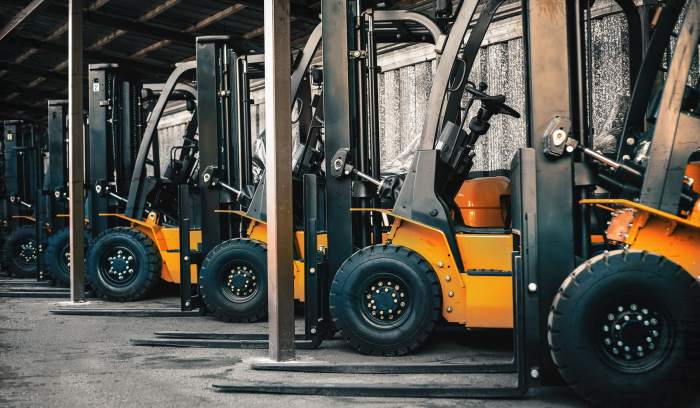Contract warehousing is different than 3pl warehousing – Contract warehousing and 3PL warehousing are two distinct models that offer different advantages for businesses. Contract warehousing involves a long-term agreement between a company and a warehousing provider, while 3PL warehousing provides a more flexible and scalable solution. This article explores the key differences between these two models, highlighting their respective benefits and helping businesses choose the right warehousing model for their specific needs.
Contract warehousing is ideal for businesses with predictable inventory levels and a need for dedicated storage space. On the other hand, 3PL warehousing is more suitable for businesses with fluctuating inventory levels or those requiring a wider range of services, such as order fulfillment and transportation.
Overview of Contract Warehousing vs. 3PL Warehousing

Contract warehousing and third-party logistics (3PL) warehousing are two distinct models for managing inventory and logistics. Contract warehousing involves a long-term agreement between a business and a warehouse operator, while 3PL warehousing offers a more flexible and scalable solution with a wider range of services.
Key differences between the two models include:
- Contract warehousing typically involves a dedicated warehouse space, while 3PL warehousing allows for shared or flexible space.
- Contract warehousing provides more control over inventory and operations, while 3PL warehousing offers access to a wider range of services and expertise.
- Contract warehousing is typically more cost-effective for businesses with high-volume inventory, while 3PL warehousing is more suitable for businesses with fluctuating inventory levels or specialized storage needs.
Industries that commonly use contract warehousing include manufacturing, retail, and healthcare, while industries that often use 3PL warehousing include e-commerce, food and beverage, and automotive.
Benefits of Contract Warehousing: Contract Warehousing Is Different Than 3pl Warehousing

Contract warehousing offers several advantages for businesses, including:
- Cost savings:Contract warehousing can be more cost-effective than managing inventory in-house, as it eliminates the need for capital investment in warehouse space and equipment.
- Improved inventory management:Contract warehouses often have advanced inventory management systems that can help businesses track inventory levels, optimize storage, and reduce waste.
- Increased efficiency:Contract warehouses are staffed by experienced professionals who can handle all aspects of inventory management, freeing up business owners to focus on other areas of their operations.
Case study:XYZ Manufacturing, a leading manufacturer of electronics, partnered with a contract warehouse to manage its inventory. The contract warehouse implemented a customized inventory management system that helped XYZ Manufacturing reduce its inventory costs by 15% and improve its inventory accuracy by 99%.
Benefits of 3PL Warehousing

3PL warehousing also offers several advantages for businesses, including:
- Flexibility and scalability:3PL warehouses can provide flexible and scalable storage solutions, allowing businesses to adjust their storage space and services as needed.
- Access to a wider range of services:3PL warehouses often offer a wider range of services than contract warehouses, including transportation, distribution, and value-added services such as packaging and labeling.
- Expertise and technology:3PL warehouses have access to the latest technology and expertise in logistics and inventory management, which can help businesses improve their supply chain efficiency.
Case study:ABC E-commerce, a leading online retailer, partnered with a 3PL warehouse to manage its inventory and fulfillment. The 3PL warehouse provided ABC E-commerce with flexible storage space, transportation services, and value-added services such as packaging and labeling. This partnership allowed ABC E-commerce to reduce its shipping costs by 10% and improve its customer satisfaction ratings by 5%.
Choosing the Right Warehousing Model

The choice between contract warehousing and 3PL warehousing depends on a number of factors, including:
- Volume and type of inventory
- Storage and handling requirements
- Budget
- Level of control desired
- Need for additional services
The following table compares the key features of contract warehousing and 3PL warehousing:
| Feature | Contract Warehousing | 3PL Warehousing |
|---|---|---|
| Storage space | Dedicated | Shared or flexible |
| Control over inventory | More control | Less control |
| Range of services | Limited | Wide range |
| Cost | More cost-effective for high-volume inventory | More cost-effective for fluctuating inventory levels or specialized storage needs |
To choose the right warehousing model, businesses should carefully consider their business needs and evaluate the pros and cons of each model.
FAQ Corner
What are the key differences between contract warehousing and 3PL warehousing?
Contract warehousing involves a long-term agreement between a company and a warehousing provider, while 3PL warehousing provides a more flexible and scalable solution.
Which warehousing model is right for my business?
The choice between contract warehousing and 3PL warehousing depends on a variety of factors, including the size and nature of the business, its inventory management requirements, and its budget.
What are the benefits of contract warehousing?
Contract warehousing offers cost-saving advantages, improved inventory management, and dedicated storage space.
What are the benefits of 3PL warehousing?
3PL warehousing provides flexibility, scalability, and access to a wider range of services, including order fulfillment and transportation.